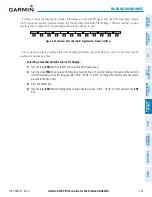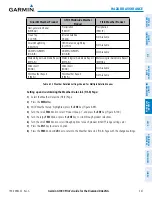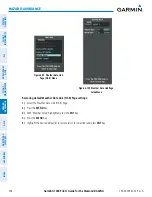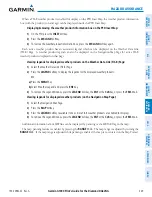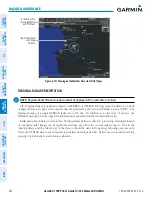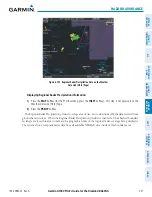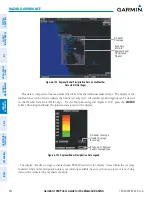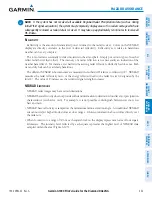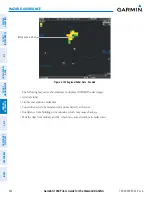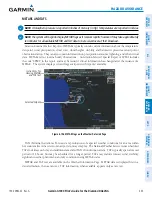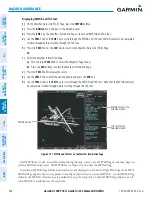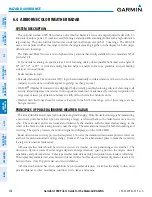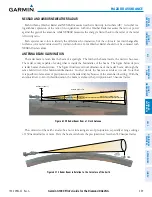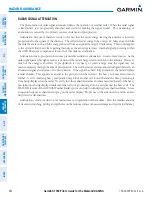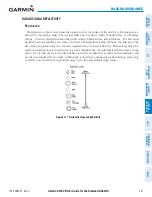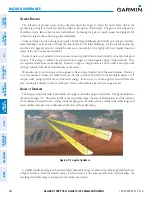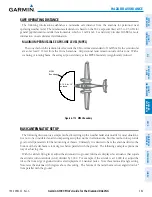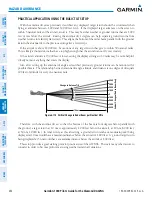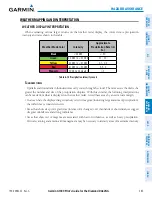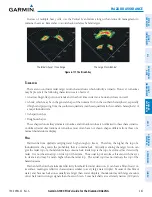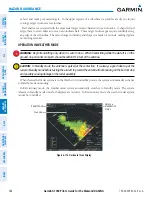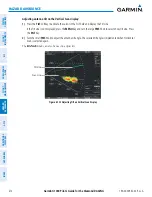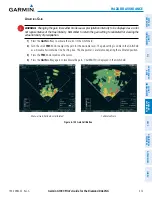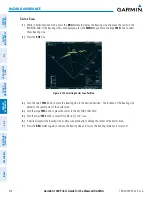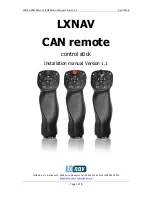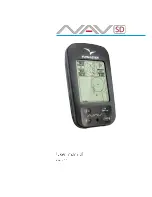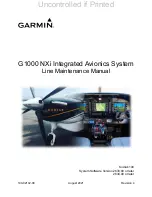
190-00962-02 Rev. A
Garmin G1000 Pilot’s Guide for the Diamond DA42NG
359
HAZARD AVOIDANCE
SY
STEM
O
VER
VIEW
FLIGHT
INSTRUMENTS
EIS
AUDIO P
ANEL
& CNS
FLIGHT
MANA
GEMENT
HAZARD
AV
OID
ANCE
AFCS
ADDITIONAL
FEA
TURES
APPENDICES
INDEX
NEXRAD AND AIRBORNE WEATHER RADAR
Both Airborne Weather Radar and NEXRAD measure weather reflectivity in decibels (dB). A decibel is a
logarithmic expression of the ratio of two quantities. Airborne Weather Radar measures the ratio of power
against the gain of the antenna, while NEXRAD measures the energy reflected back to the radar, or the radar
reflectivity ratio.
Both systems use colors to identify the different echo intensities, but the colors are not interchangeable.
Airborne color radar values used by Garmin Airborne Color Weather Radar should not be confused with
NEXRAD radar values.
ANTENNA BEAM ILLUMINATION
The radar beam is much like the beam of a spotlight. The further the beam travels, the wider it becomes.
The radar is only capable of seeing what is inside the boundaries of the beam. The figure below depicts
a radar beam’s characteristics. The figure illustrates vertical dimensions of the radar beam, although the
same holds true for the horizontal dimensions. In other words, the beam is as wide as it is tall. Note that
it is possible to miss areas of precipitation on the radar display because of the antenna tilt setting. With the
antenna tilt set to zero in this illustration, the beam overshoots the precipitation at 15 nautical miles.
80
Altitude (x1000 ft.)
Range (nautical miles)
Antenna at Zero Tilt
Half Power at Beam Sidelobes
18,000 ft.
18,000 ft.
Max Power at Beam Center
10°
0
30
0
45
60
75
90
15
Figure 6-109 Radar Beam from a 12 inch Antenna
The curvature of the earth can also be a factor in missing areas of precipitation, especially at range settings
of 150 nautical miles or more. Here the beam overshoots the precipitation at less than 320 nautical miles.
320 nm
Figure 6-110 Radar Beam in Relation to the Curvature of the Earth

